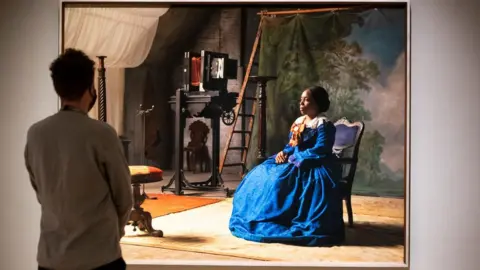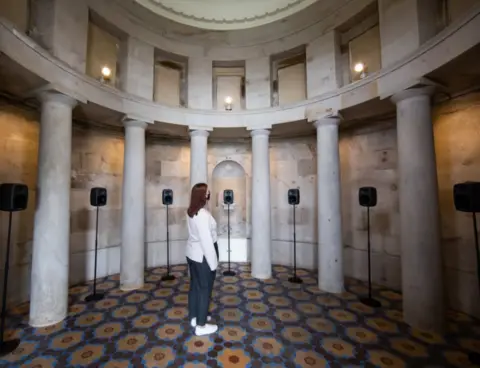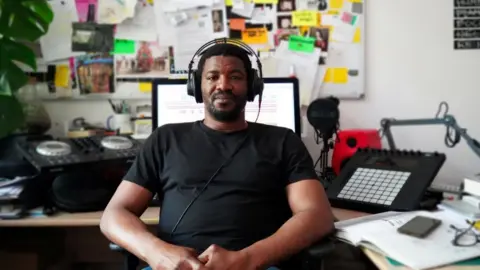Flexibility allows Edinburgh Art Festival to flourish
 Duncan McGlynn
Duncan McGlynnEdinburgh Art Festival may be the newest of the city's summer festivals - having sprung into life in 2004 - but it quickly found its feet, and indeed the feet of thousands of visitors, already in town for the other summer festivals.
Talk of staggering the various summer events in the capital was always mistaken. The festivals work best because they do overlap, merge into each other, share ideas, events and patrons so it was right that they took the decision together to cancel last year, and they'll return together this summer.
It will feel like a very different festival: smaller and much less spontaneous but there's still much to admire.
Art has always been an integral part of the international festival, right back to those early days. But a separate body, director and direction has allowed the art festival to develop the kind of connections with artists and organisations which much older institutions will envy.
With a dramatically reduced programme, just 35 exhibitions and works, you might worry the international element would be curtailed, and that the work itself might be limited, but no, it seems as if the pandemic has brought out the best in artists and their work.
 Duncan McGlynn
Duncan McGlynnIsaac Julien has long had a fascination with American abolitionist Frederick Douglass, and it seems like Douglass had a similar fascination with Scotland. From his name (which he took from Walter Scott) to the time he spent living in Edinburgh in the 1840s (he'd have happily stayed if his equally political wife hadn't wanted to return to the US to continue campaigning for the abolition of slavery.)
Julien uses film and photography to build a vivid picture of Douglass. It can be viewed as individual images, suspended in the Scottish National Gallery of Modern Art, or it can be watched as a short film, online or in the gallery.
With up to 14 people socially distanced in the room, or unlimited numbers online, it's the kind of flexibility that should allow this festival to flourish.
 Sally Jubb
Sally JubbSome venues - like Jupiter Artland - are entirely out doors. Others, like the Burns Monument, can stagger visitors.
I'm the only person there, mid morning, and I stand alone in the small space, listening to disembodied voices singing Auld Lang Syne in Latvian, Italian, Hungarian and Gaelic. Nigerian artist Emeka Ogboh came up with the idea in February 2020, just after MEPs marked the UK leaving the EU with a spontaneous chorus of Auld Lang Syne.
His plans were somewhat challenged by lockdown (he's based in Berlin) but working with Talbot Rice Gallery, he managed to find 27 singers living in Edinburgh, who represented every EU member state, and record them singing Auld Lang Syne in their own native tongue.
He then programmed the recordings, to overlap in the space. It's surprisingly effective and emotional. Because the tune is so familiar, and the Scots words so distinctive, it's not immediately apparent that they're singing different versions of the song.
 Emeka Ogboh
Emeka OgbohThat's even more apparent later in the day when the singers visit the installation for the first time themselves, and they stand outside the Burns Monument and sing together for the first time. Emeka Ogboh is watching - and listening - on Zoom, just as he has done throughout this process.
His commission isn't just completed. It has taken on a life of its own. It's a hugely emotional moment for everyone involved.
If the pandemic has taught us anything, it's perhaps to go slowly, and appreciate what's all around. In the past, days out at the Art Festival would have been spontaneous affairs, involving about turns in the busiest spaces, and much pounding of pavements.
There'll be no less walking this year, with exhibitions spread around the whole city. The festival has published its regular map, offering routes which take in as many or as few sites as you fancy.
A little planning is involved. Most venues are asking visitors to book, but many are drop in, and the majority are free.
'Fact that we are here, is great feat'
Next week, both the Edinburgh International Festival and the Fringe will add their reduced programmes into the mix, and the following week, both book festival and film festival will begin.
It will be far from the scale of recent years. In 2019, the Art Festival attracted a record number of 290,000 visitors. The same year, the Fringe sold more than three million tickets.
But for Sorcha Carey, director of Edinburgh Art Festival, Edinburgh's festivals are no longer about numbers.
"We're all thinking differently about what a festival is," she says.
"How we judge the success of the festival this year is the fact we are here, that we are returning and we're sharing art with an audience, and that in itself is a great feat."
Edinburgh Art Festival runs from July 29th to August 29th
